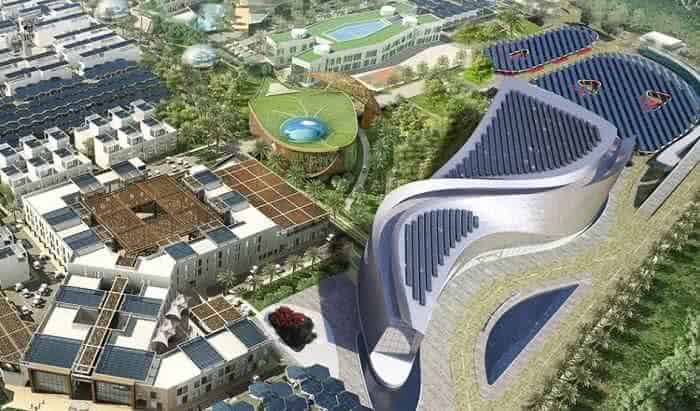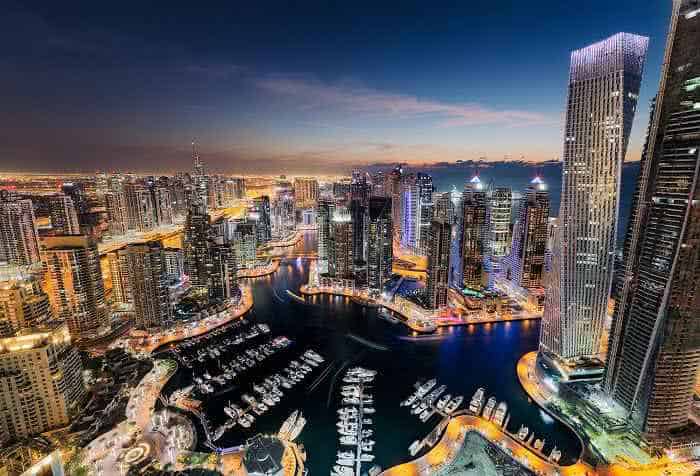When you think about Dubai, ‘sustainable’ may be the last thing you might have in mind. From just a desert to one of the most modern city in the world, Dubai has grown in terms of leaps and bounds, and while initially it bore the brunt for having a large carbon footprint, a lot of initiatives have taken place ever since in terms of sustainability. Not only did it win the bid for Expo 2020 with its sustainable angle, Dubai aims to be the most sustainable city in the world by 2050. The clean energy strategy unveiled by Ruler of Dubai, His Highness Sheikh Mohammed bin Rashid Al Maktoum was generating 7% of energy via clean sources by 2020, which he then aims to raise to 25% in 2030, to finally 75% in 2050.

Despite subsidies on electric cars as well as free parking initiatives for eco-friendly vehicles, Dubai is also making leaps and bounds in creating a sustainable eco-first community called Dubai Sustainable City. Located nearby the Arabian Ranches community, Dubai Sustainable City is made of a community of 200 villas that have 3 to 4 bedrooms. It got so much worldwide attention, even Leonardo di Caprio couldn’t resist having a look. Here are 15 facts you didn’t know about this bustling new community:

- The community includes electric buggies, an electric vehicle concierge service, vehicle charging stations and $10,000 subsided when buying electric cars. It’s home to over 2,700 residents.
- All the water and waste is 100% recycled. It produces more energy than it consumes. The organic waste is composted and used in greenhouses to grow crop. Residents have their own ‘beds’ to grow their own herbs, veggies and fruits with a minimum investment of approximately US$25.
- Dubai Sustainable City is a car-free community. The residence clusters are left untouched by any vehicles and electric buggies are provided.
- The community grows their own organic produce that is consumed within the community. From fresh chillies to basil, they grow it all! There are 12 designated plots for organic farming inside and outside 11 temperature-controlled bio domes.
- Because of the heat, the homes are designed in a way that they overshadow each other. Because of this, the air conditioning units are 40% smaller and therefore the community as a whole consumes less electricity and effectively gets rid of the overbearing heat, especially in peak summer, when the temperature exceeds 45 degree celcius.
- The houses are also fitted out with extra insulation, reflective windows and paint, and LED lights further cut energy consumption to around half, according to an interview with National Geographic. Each house each house produces between 25 and 30 kilowatts of power per hour. Each roof has a solar water heater, so there’s warm water all day long. The entire area is powered by by 600,000 square feet of solar cells. As a result, the electricity bills are a whole lots less compared to other areas in Dubai.
- Since 2016, the development has won 20 international awards for being the best community in Dubai due to its sustainability initiatives. It’s also voted Dubai’s happiest community.
- The community promotes a healthy lifestyle with horse and cycling tracks, fitness stations both indoors and outdoors, a hospital as well as a clinic for alternative medicine.
- With 60% green spaces, the community creates an ecosystem of its own, with plenty of trees lining its perimeter to keep out both the pollution as well as noise. It’s well known that more green spaces promotes a greener atmosphere for the residents. The two community lakes is made up of recycled greywater and irrigate all the greenery. This method has been taken from 15th century irrigation.
- Dubai Sustainable City is the world’s first residential development to introduce “Aqueous Ozone”- it’s very own sustainable natural cleaner that is said to be up to 50 times more effective than common household bleach. On top of that, it leaves no toxic residue or vapour.
- There’s going to be a ‘phase 2’ of the city, which will include: an ecological engineering institute, a hospital and rehabilitation centre, a “Green” School for K-6, and a 143 room eco-hotel. The hotel (called Hotel Indigo) will be a net zero energy building and 100% solar powered. The produce used in preparation will be sourced from urban farming facilities incorporated into the hotel grounds, in addition to the pre-existing bio-domes.
- The community has an app called Peerby through which they can share resources, ensuring a more sustainable social environment as well.
- The community even has a power generating gym, so residents can feel even better about their workouts. Your one hour workout could generate up to 6,000 watts in power, enough to light a bulb for nearly 2,000 hours!
- They have a sustainable mosque too, designed to minimise waste and water. The mosque is insulated enough to prevent thermal heat and is cooled using high-efficiency AC systems. It is also fitted with LED lighting, which we know is an energy saving light.
- The community has developed their very own bags out of old, used fabric called ‘Boomerang bags’. These bags have been initiated and are in active use by the community. Besides this, they have a weekly food box programme and a weekend outdoor market for surplus produce not used by the community.